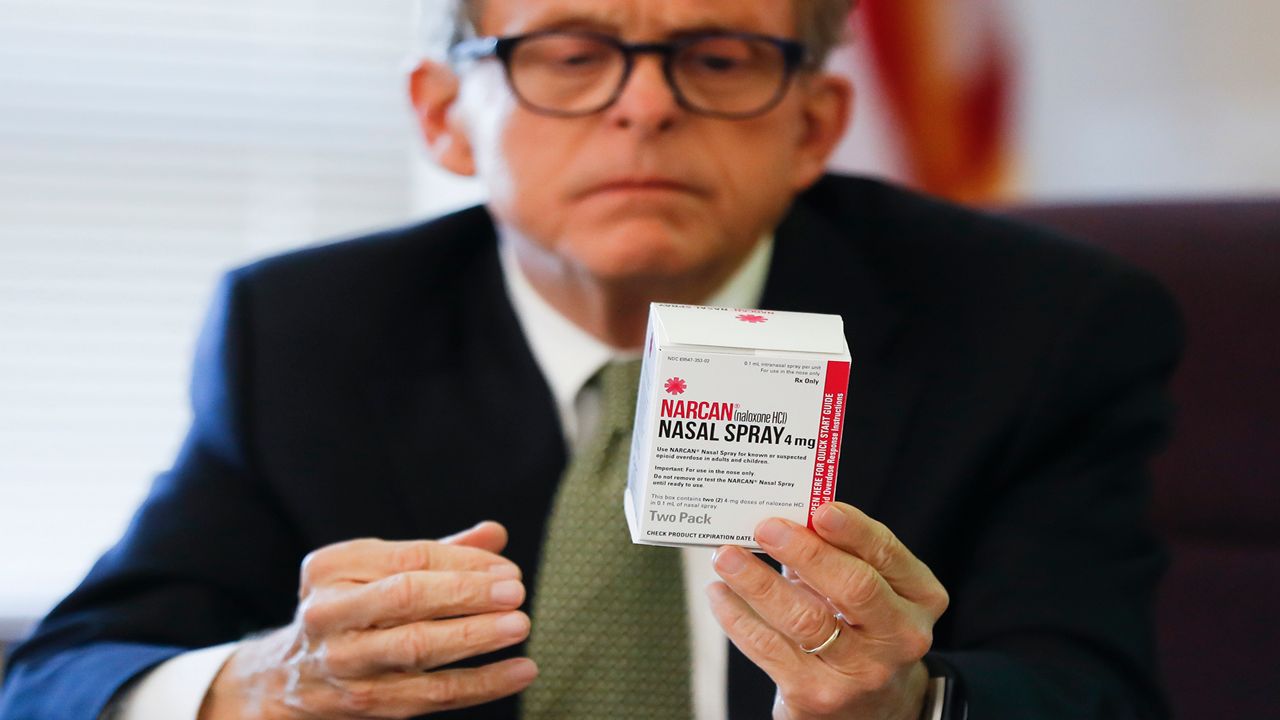OHIO — The state documented a high number of drug overdose deaths in the first half of 2020, outpacing 2019 by nearly 20%. That's according to a new report from Harm Reduction Ohio, a Granville-based nonprofit which consists of a group of epidemiologists and other health professionals. The group claims to be the largest distributor of naloxone in the state, which is an opioid-overdose antidote.
Nineteen counties have already set records this year in terms of drug overdose deaths, according to data from the Ohio Department of Health. Overall, the state set new records for May, June and July compared to the past five years. The state recorded the most deaths it's ever had within a month in May, documenting 557 deaths.
June and July set records for the most ever recorded for those two months. The state documented 487 deaths in June and 446 deaths in July.
So far, the state had more than 3,700 deaths this year, and Harm Reduction Ohio reports it's likely to increase as cases are still pending.
"Covid-19, with its job loss and social isolation, has played a role in increased overdose death this year. But the primary driver of more overdose death is the increased share of cocaine, meth, opioids and fake pills containing fentanyl or a fentanyl analog," the group wrote.
The worst year for drug overdose deaths was 2017, when the state recorded more than 4,800 lives lost. Harm Reduction Ohio said as many cases are still pending, 2020 could end up being worse than 2019, which had 4,028 deaths — the second-highest number recorded in five years.
Out of all 88 counties, Franklin County has reported the highest number of deaths so far. The county has confirmed 551 deaths, and it could be the first to pass 600 deaths this year. It would be the first county to document 600 deaths in one year. Cuyahoga County came close in 2017 with 598 deaths.
As Ohio's drug crisis worsens during the pandemic, law makers are still deciding on legislation that could decriminalize drug offenses. Senate Bill 3 could expand treatment for offenders with an addiction instead of criminalizing them, and the bill could end criminalization for low-level offenses. However, it's possible the legislation will end up not passing as the year comes to an end.
The state budget presented last week also includes includes $4.5 million to build a center in Franklin County that would provide inpatient treatment, a walk-in clinic and short-term beds. The center is expected to cost $50 million.
In the meantime, Gov. Mike DeWine, Sen. Rob Portman, Recovery Ohio Director Alisha Nelson, and Ohio Department of Mental Health and Addiction Services Director Lori Criss announced that more than $76 million in grants will go toward efforts to combat Ohio's drug crisis. The grants are part of the state's share of $96 million in federal State Opioid Response (SOR) 2.0 funding.
The Ohio SOR 2.0 project seeks to expand treatment services and provide more help to local communities.
“Many communities are seeing an increase in demand for mental health and substance use disorder services as the pandemic continues. The uncertainties of the pandemic intensify the struggle with substance use disorder that many Ohioans face,” DeWine said.



